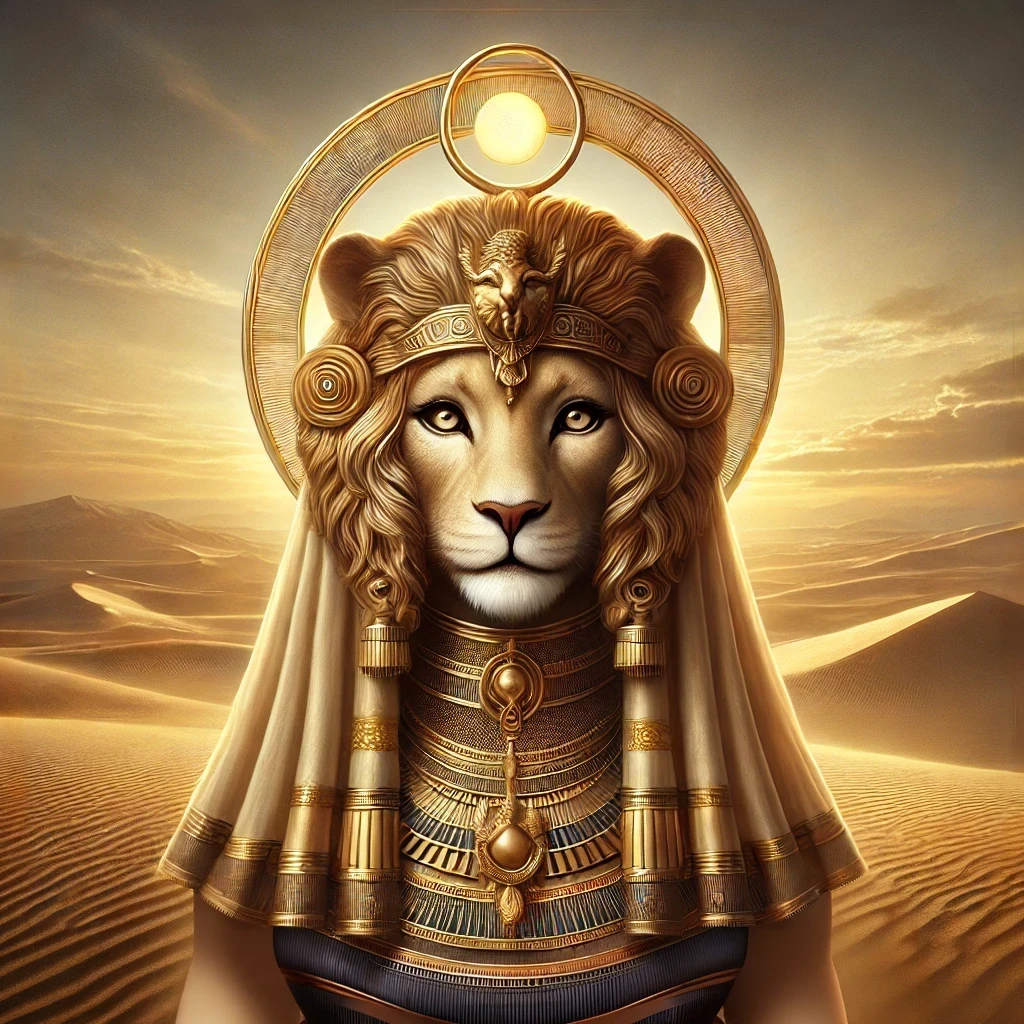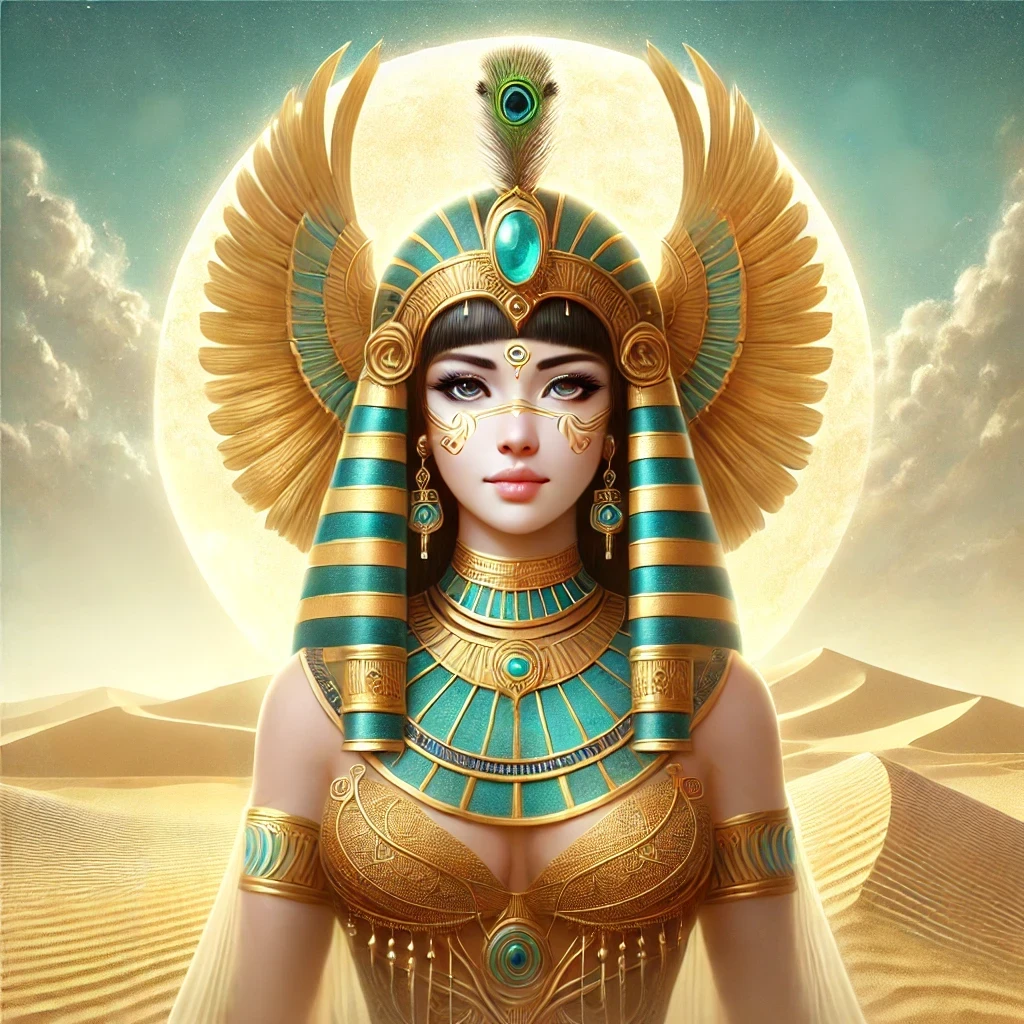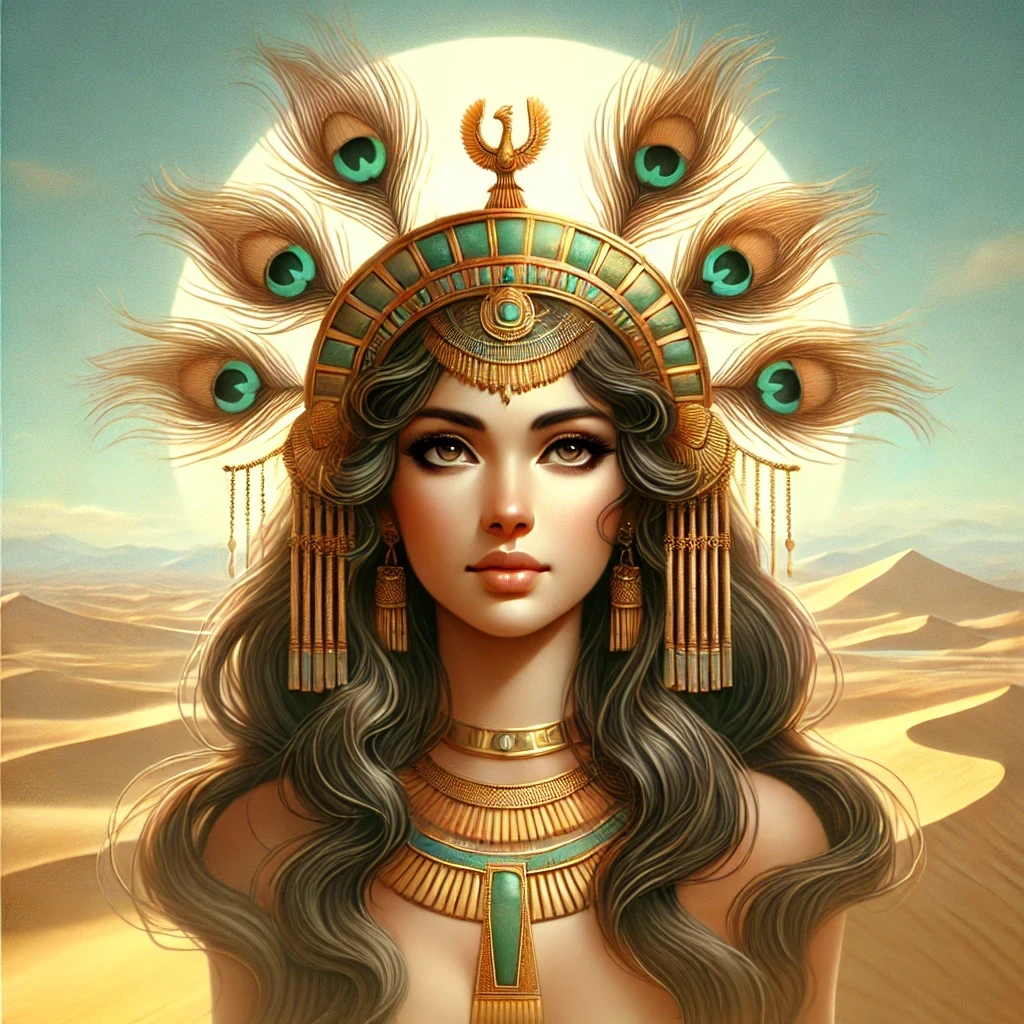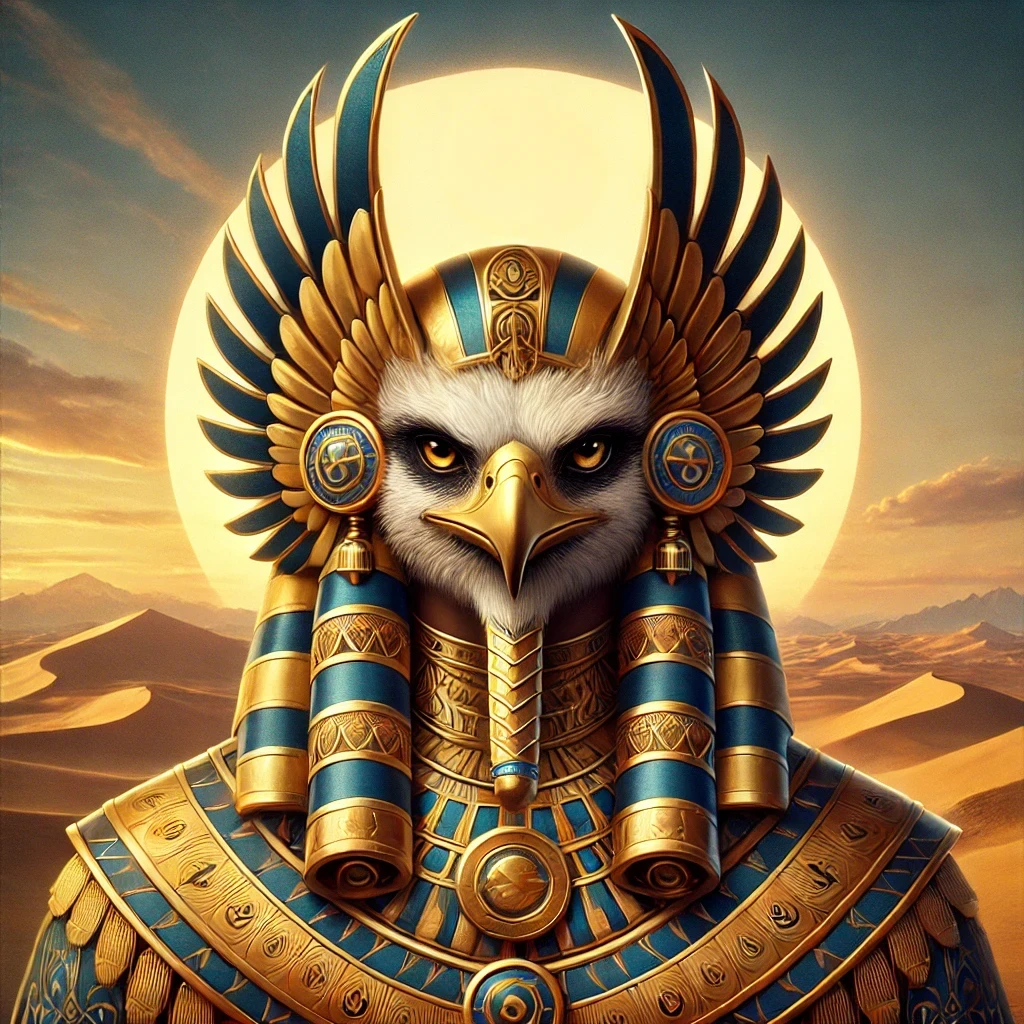Menhit, alternatively spelled Menhyt or Menchit, is an ancient Egyptian deity often associated with war and protection. Known as “She Who Massacres,” her name derives from the Egyptian verb “menh,” meaning “to massacre” or “to slaughter.” Often depicted as a lion-headed goddess, she embodies strength, ferocity, and the fiery heat of the sun. She was revered in regions like Esna and was closely associated with other solar deities and protective figures within the Egyptian pantheon.
Origins
Menhit’s origins trace back to the earliest periods of Egyptian history, with her worship likely emerging during the Old Kingdom. Her primary cult centers were in Upper Egypt, notably in Esna, where she was venerated alongside other deities in local triads.
Historical Context
Her role as a warrior goddess reflected the militaristic aspects of ancient Egyptian society, particularly during times of conquest and defense. Her fiery persona symbolized the destructive yet protective force of the sun, aligning her with other solar deities like Ra.
Role in Egyptian Cosmology
While primarily associated with war, she was also considered a guardian deity who protected the pharaoh and the realm. Her presence in temple inscriptions and hymns underscores her importance in maintaining cosmic order and defeating chaos.
Appearance
Menhit’s imagery was striking and emblematic of her fierce nature, often blending human and leonine features.
Common Depictions
- Lion-Headed Woman: She was typically depicted as a woman with the head of a lioness, emphasizing her ferocity and connection to war.
- Solar Disc and Uraeus: Her headdress often included a solar disc surrounded by the uraeus, signifying her solar and protective attributes.
Artistic Representations
In temple reliefs and statues, she is shown wielding weapons or standing alongside her consort, Khnum, highlighting her martial and protective roles.
Abilities
Menhit’s powers encapsulate both destruction and protection, reflecting her dual role as a warrior and guardian.
Warrior Attributes
- Martial Prowess: As a goddess of war, she was believed to lead armies into battle, striking down enemies with divine force.
- Fiery Aura: Her association with the sun imbued her with a fiery aspect, symbolizing the scorching heat of Egypt’s deserts.
Protective Powers
- Guardian of the Pharaoh: Menhit was seen as a protector of the king, ensuring his safety and victory in battle.
- Repelling Chaos: Like other lion-headed deities, she played a role in combating the forces of disorder and safeguarding Ma’at, the principle of cosmic balance.
Myths
Menhit features in several myths and religious texts, often highlighting her martial and protective qualities.
The Slaughter of Enemies
In one tale, she is invoked to decimate the enemies of Egypt during a military campaign. Her ferocity in battle ensured victory, earning her reverence as a warrior goddess.
Connection to Sekhmet
Some myths conflate Menhit with Sekhmet, another lion-headed goddess. In these narratives, she shares Sekhmet’s role in the Destruction of Mankind, where the goddess’s wrath was unleashed upon humanity before being pacified.
Symbolism
Menhit’s imagery and attributes carried profound symbolic meanings in ancient Egyptian religion.
Associated Symbols
- Lioness: Representing strength, courage, and ferocity.
- Solar Disc: Connecting her to the sun and its dual role as life-giver and destroyer.
- Weapons: Signifying her martial role and protective nature.
Additional Associations
Menhit’s ties to the sun linked her to renewal and the cyclical nature of life and death, emphasizing her role in maintaining balance.
Animals
The lion was her sacred animal, embodying her power and ferocity.
Plants and Minerals
Gold, symbolizing the sun, was often associated with her depictions, reflecting her divine and solar attributes.
Relationships
Menhit was part of a divine family and had connections to various deities within the Egyptian pantheon.
Khnum
She was considered the consort of Khnum, the ram-headed god of creation. Together, they were worshipped in Esna as part of a triad that included their son, Heka, the god of magic.
Ra
Her solar associations linked her to Ra, the sun god. She was seen as an extension of his power, embodying his fiery and destructive aspects.
Sekhmet and Bastet
Menhit shared similarities with Sekhmet and Bastet, two other lion-headed goddesses. While Sekhmet embodied wrath and healing, Bastet represented domestic protection, creating a spectrum of leonine divine roles.
Trivia
- Menhit’s name, meaning “She Who Massacres,” underscores her martial nature and fiery temperament.
- She was sometimes depicted with a bow and arrows, emphasizing her role as a huntress.
- Her worship peaked during the Middle Kingdom but declined in later periods as other deities like Sekhmet rose in prominence.
- Her connection to Khnum highlights a duality of creation and destruction, balancing her fierce persona.
- The goddess’s lion-headed form was not unique but part of a broader tradition of depicting female war deities with leonine features.



